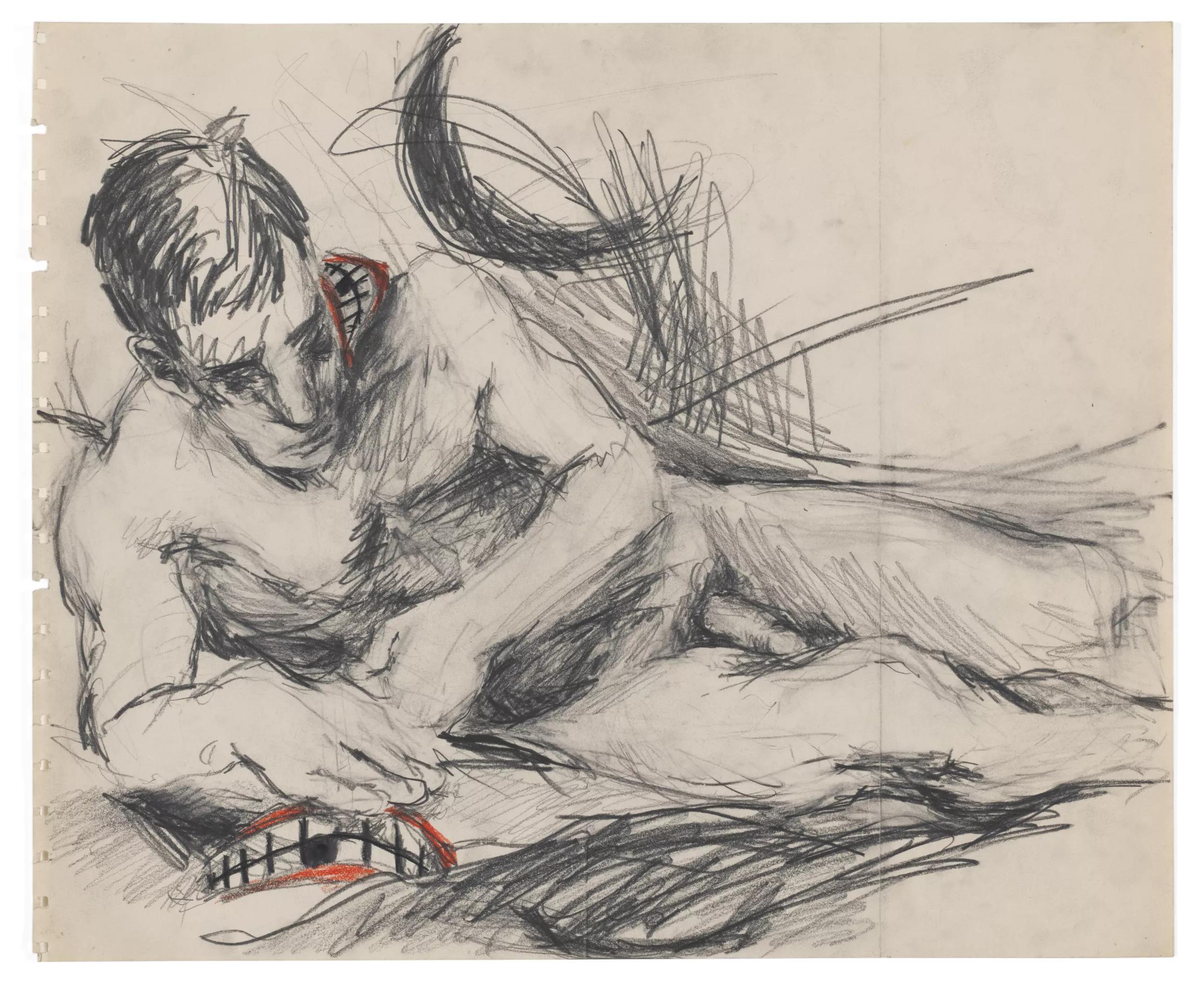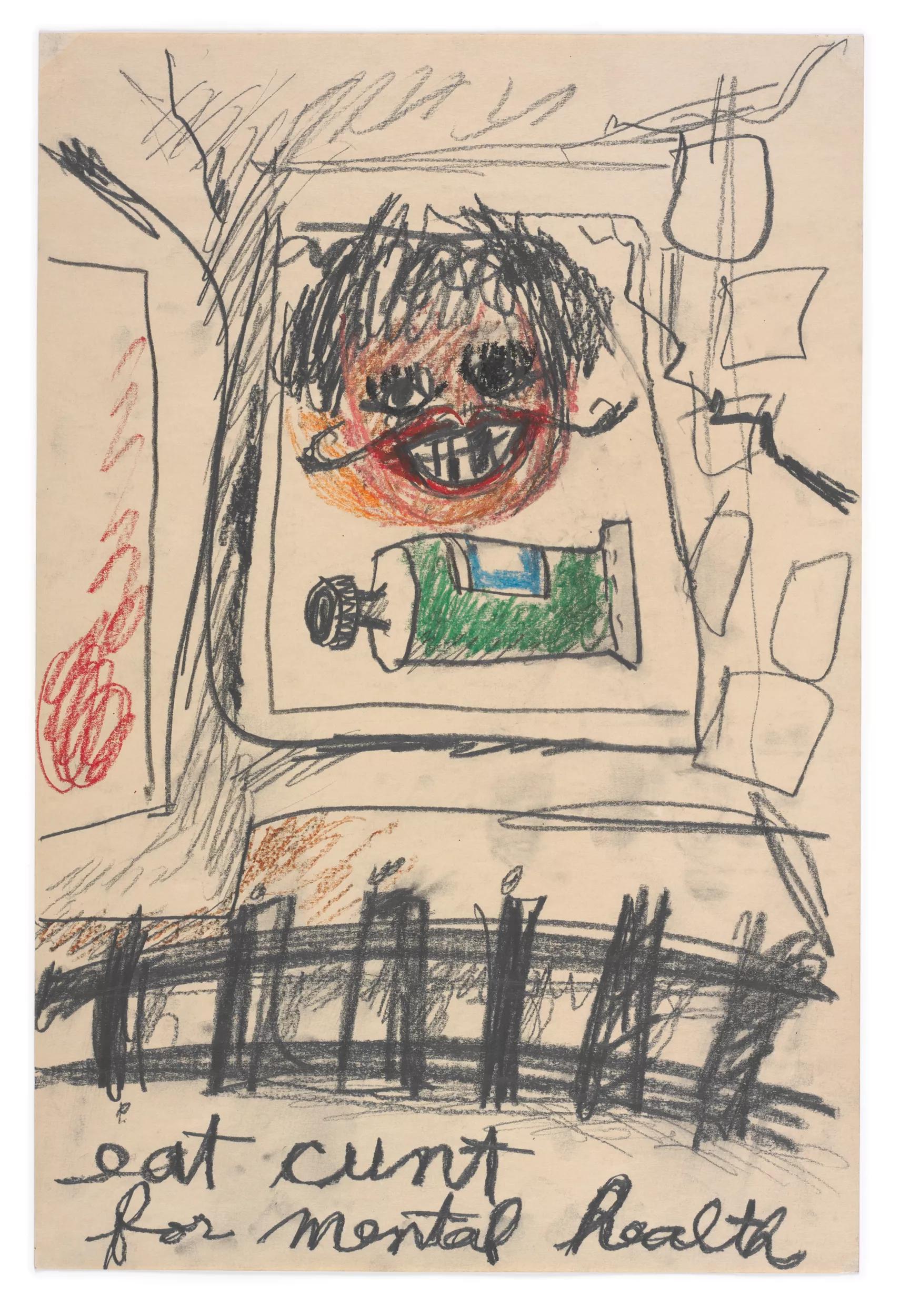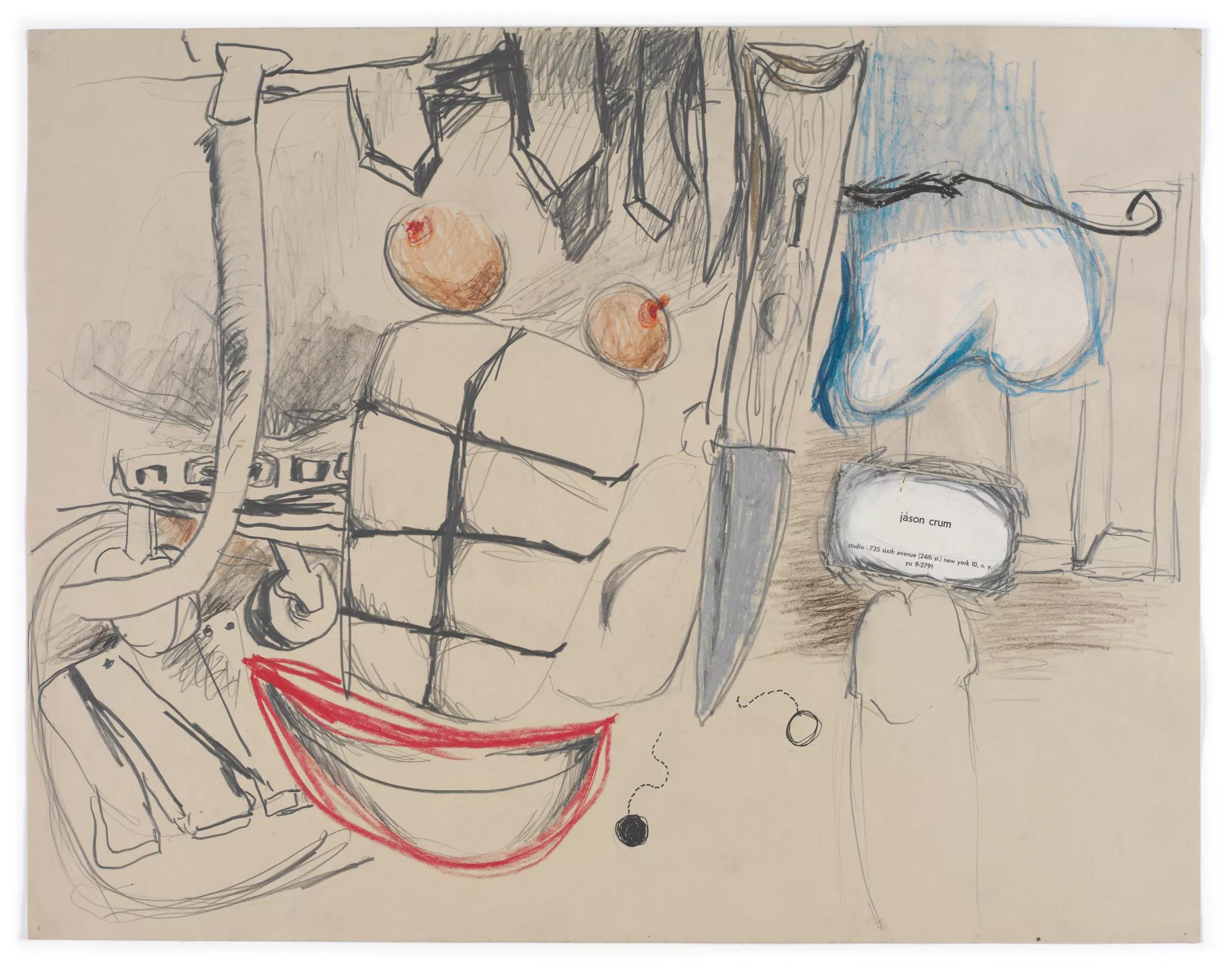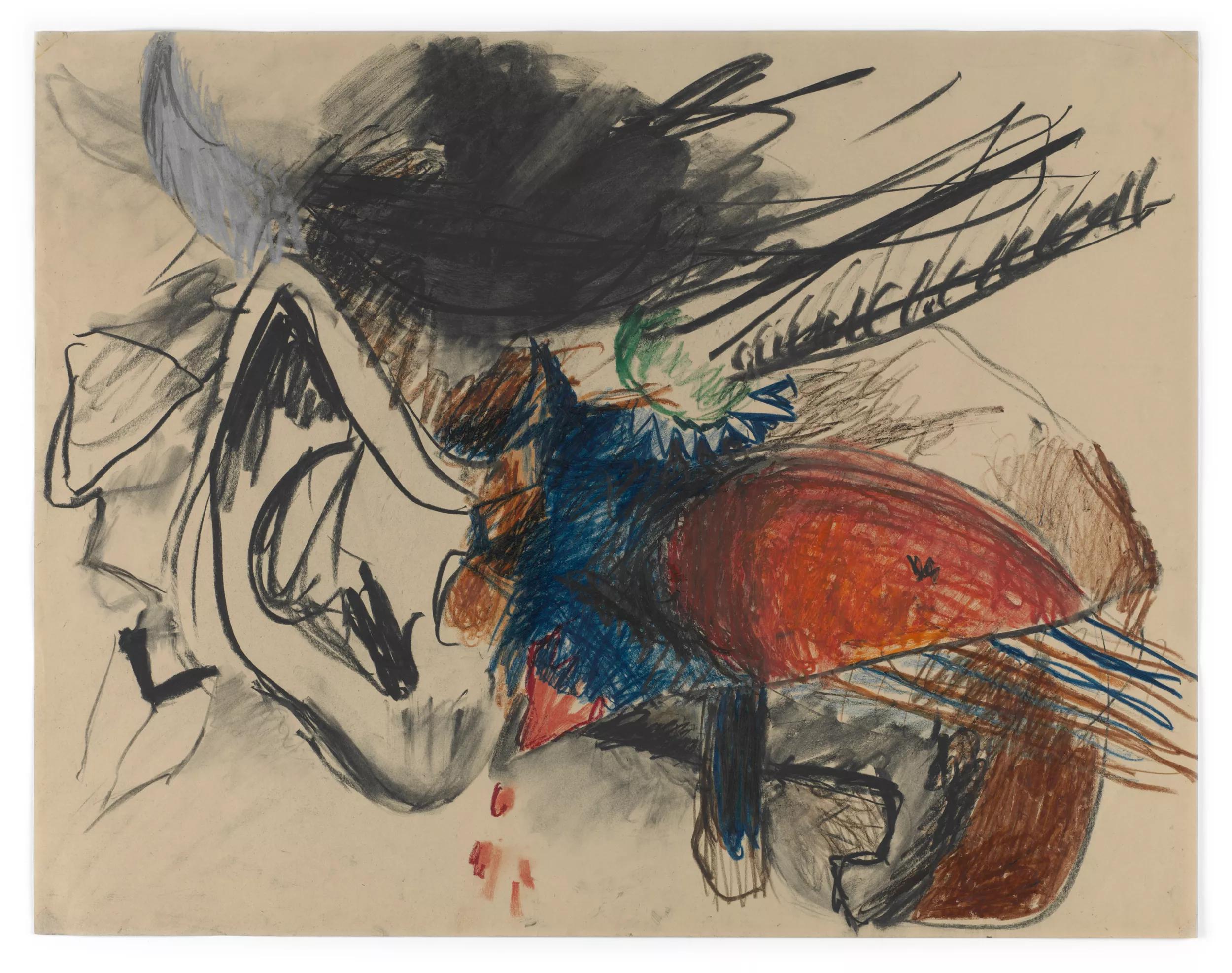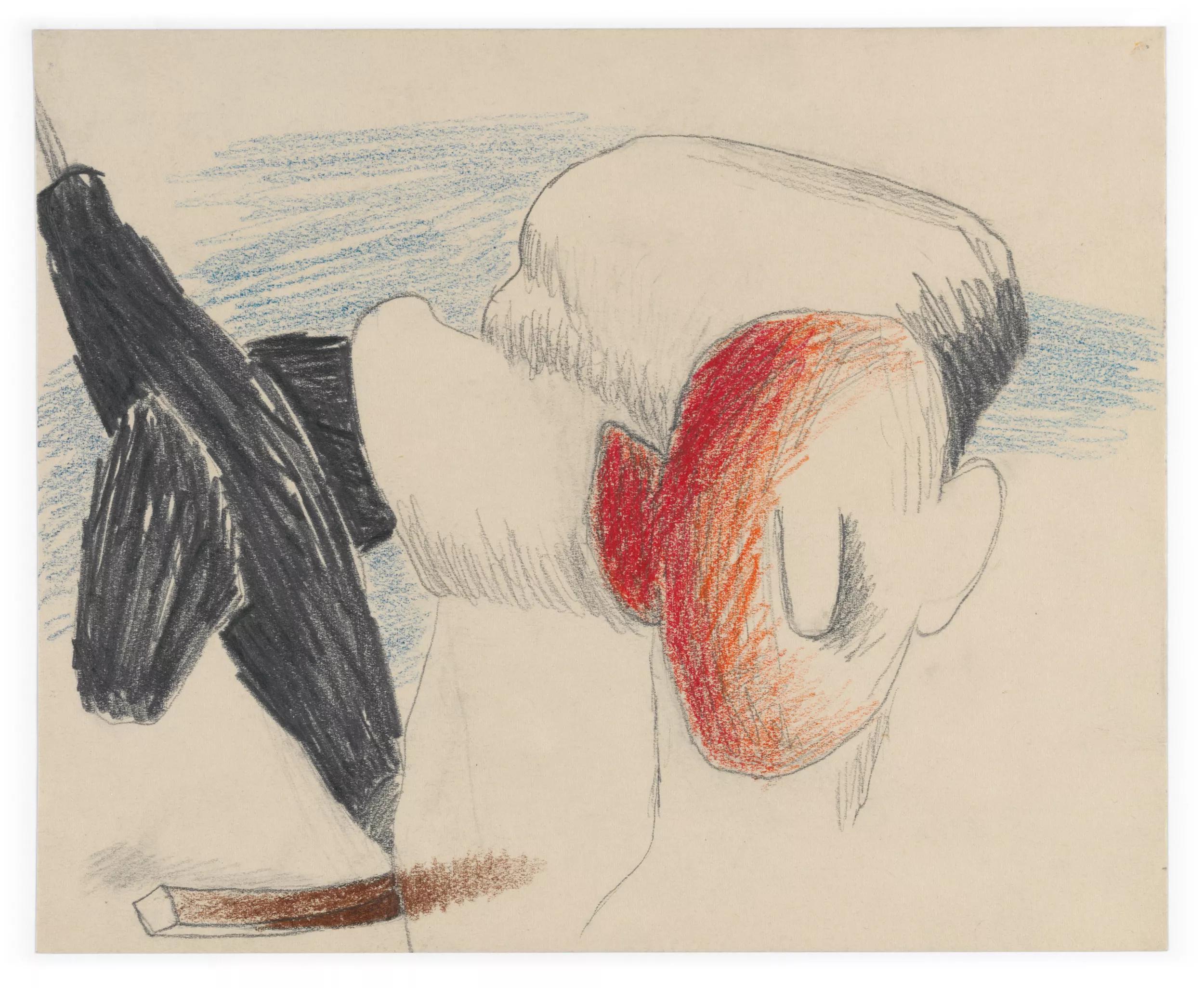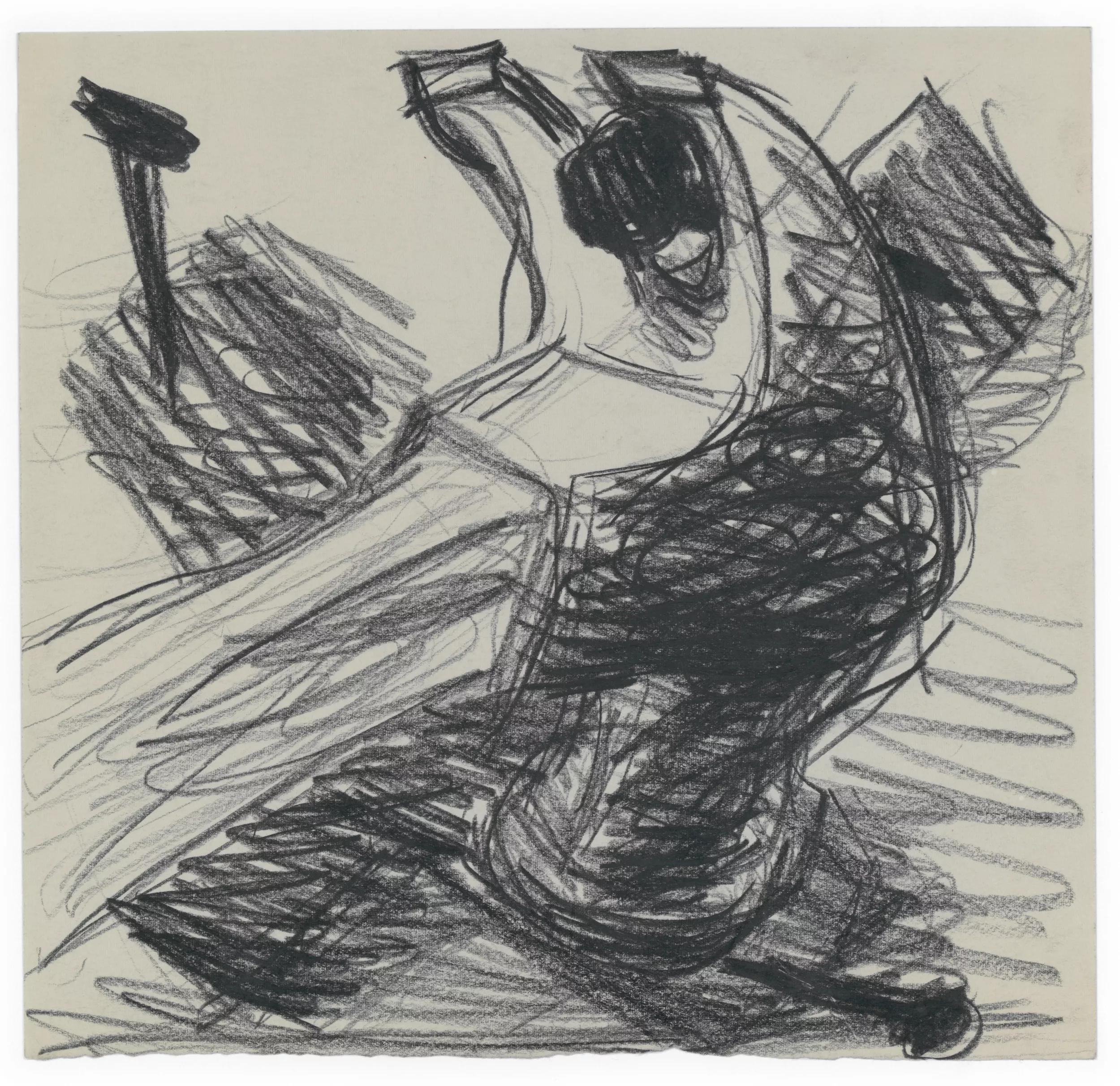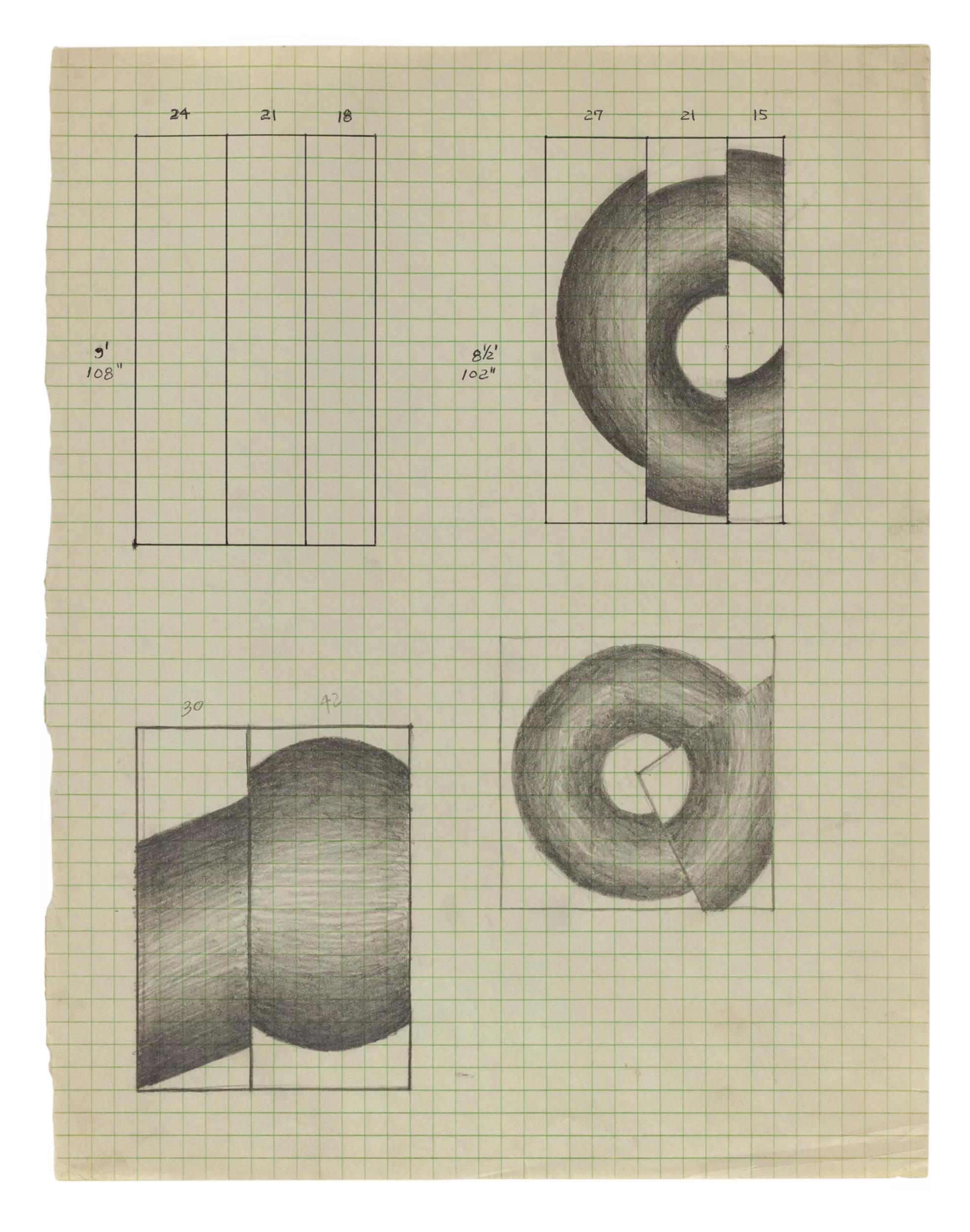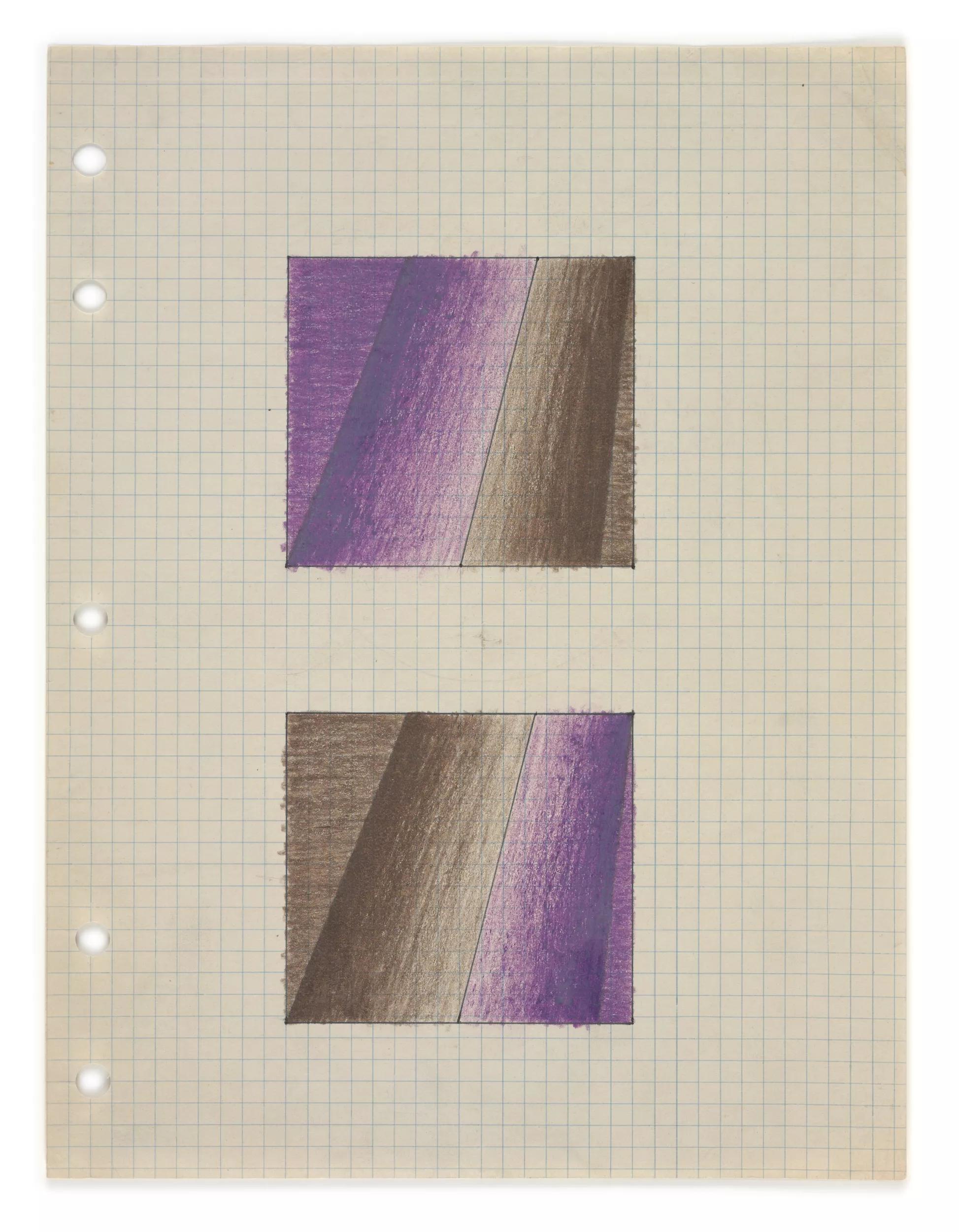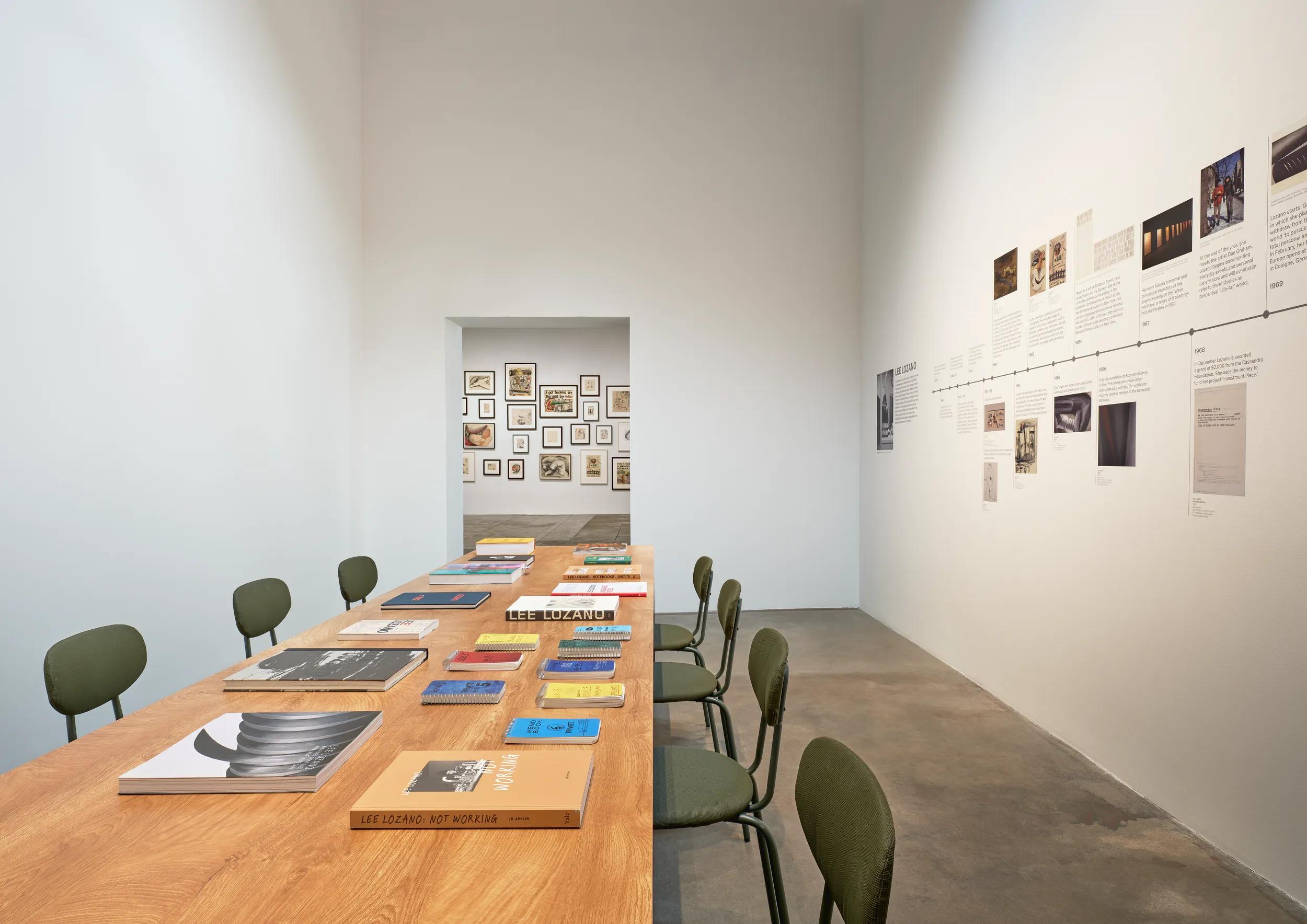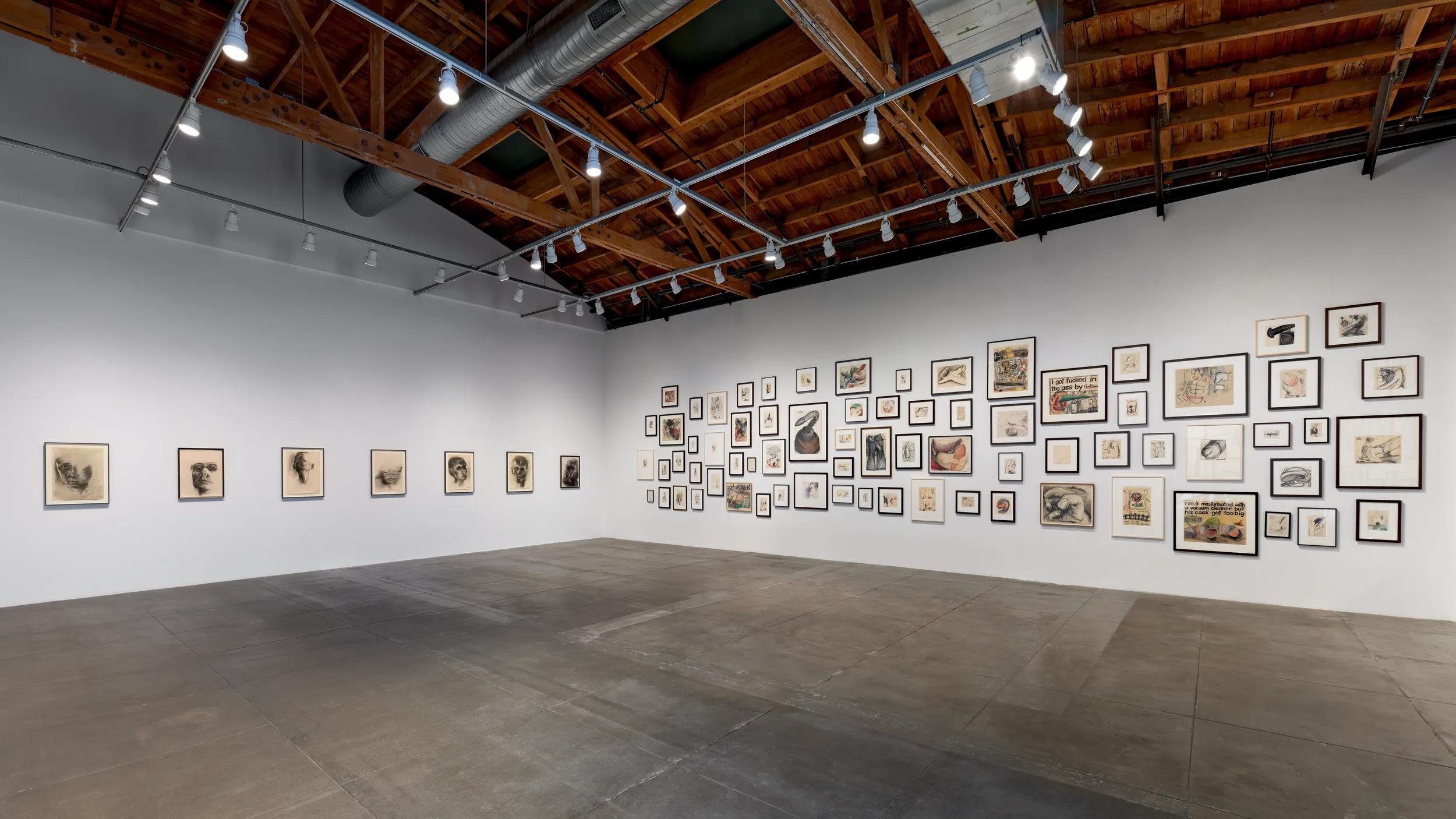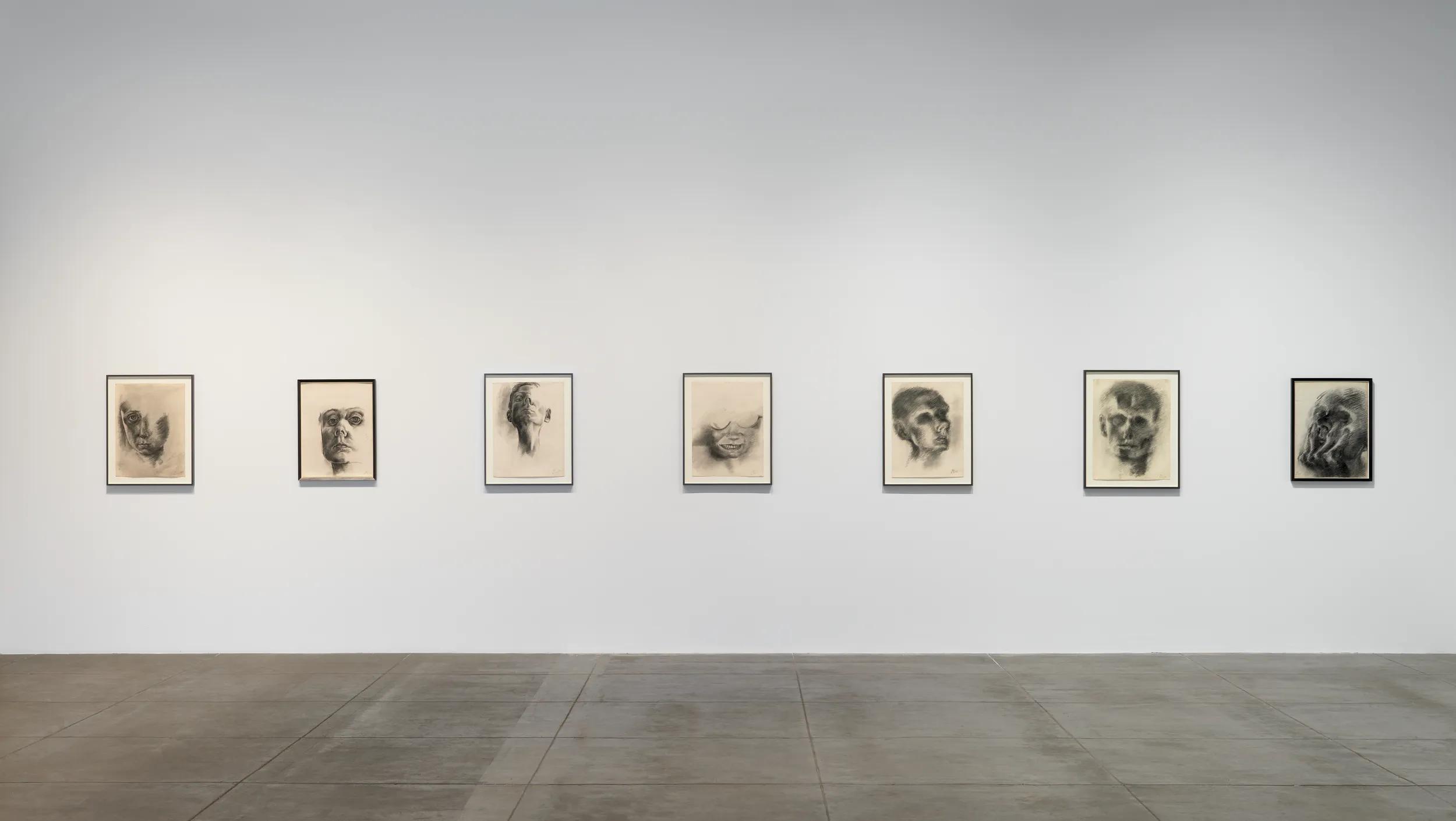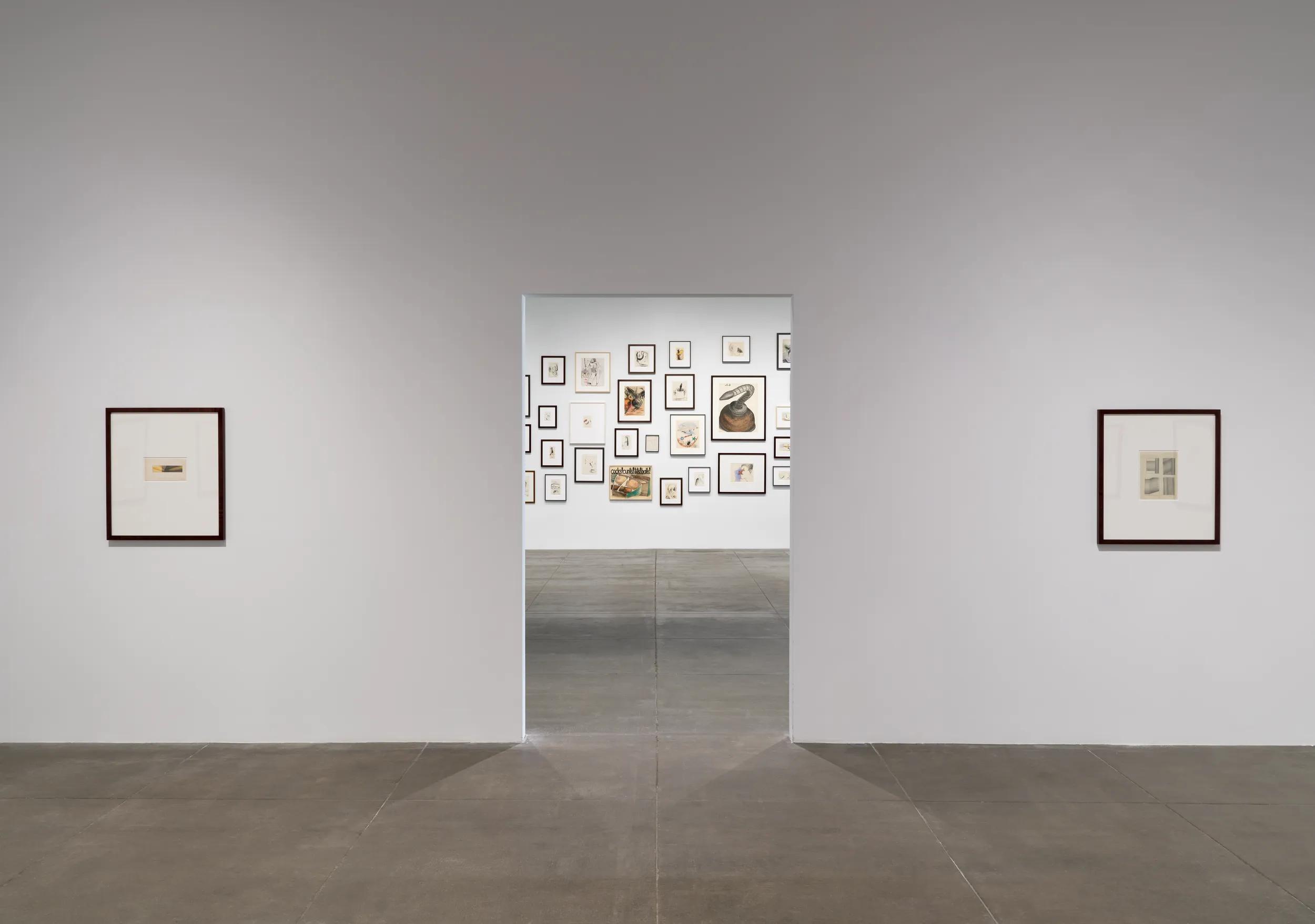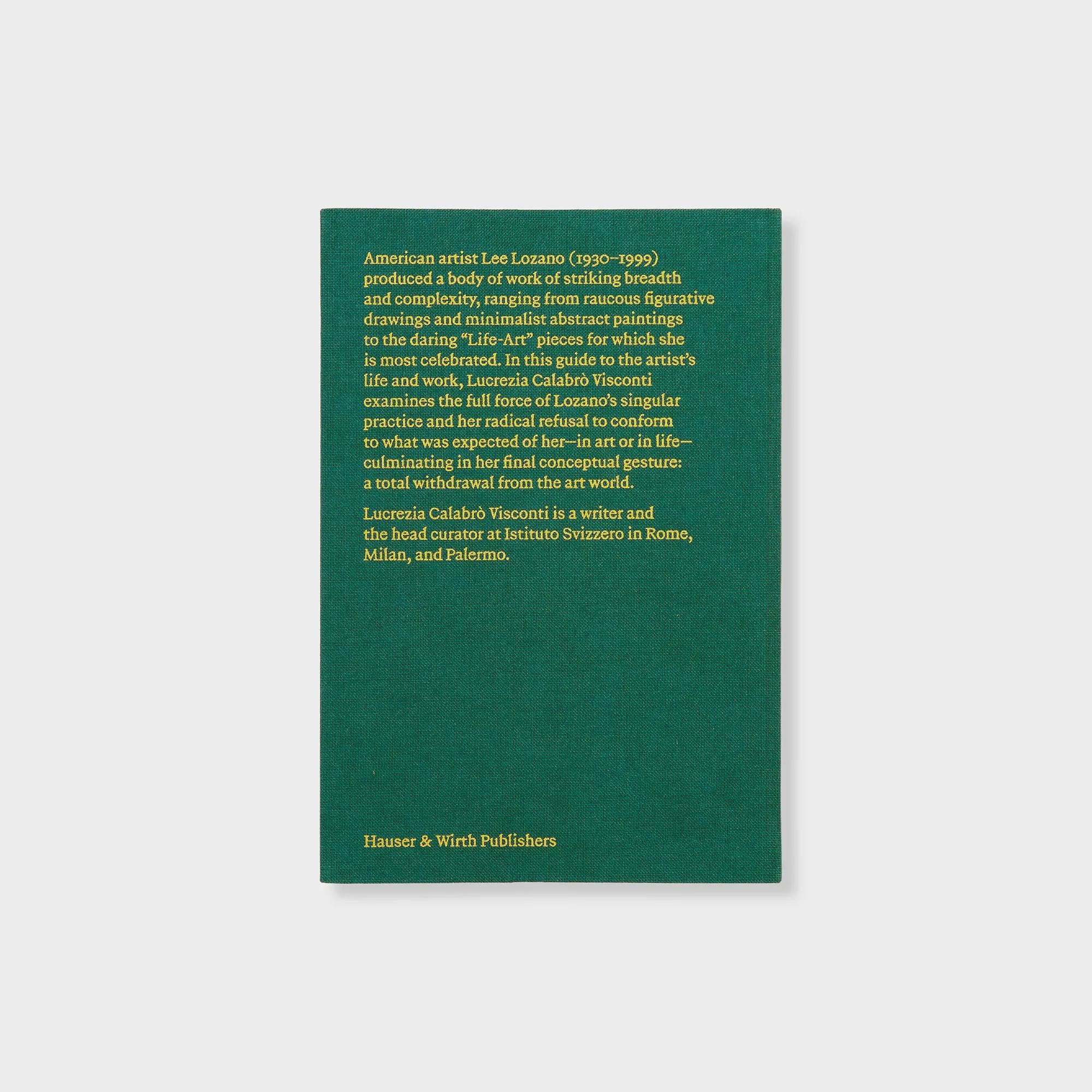Lee Lozano
Hard Handshake
30 October 2025 – 18 January 2026
Downtown Los Angeles
As the first major exhibition in Los Angeles dedicated to Lee Lozano, ‘Hard Handshake’ brings together over one hundred drawings by the artist, spanning the years 1959 to 1968. Lozano made these provocative drawings at a remarkably fast pace, using a variety of artistic styles. Informed by the artist’s unsparing eye and wry humor, they dissect such societal norms as gender roles and property ownership while challenging the commodification of art and, ultimately, all conventional aspects of life. Shown together, Lozano’s drawings embody her unbridled energy and social consciousness, radical for their time, and continue to provoke questions today. Although rarely exhibited during her lifetime, this body of work is instrumental to understanding the singular trajectory of Lozano’s practice.
The selection on view begins with the artist’s 1959 fervent self-portraits and macabre anatomical studies of male torsos and grinning skulls. These early works, which coincided with her time as a student at the Art Institute of Chicago, exude an eeriness and irreverence that prefigure the work Lozano would make after arriving in New York at the end of 1960. Moving to a downtown Manhattan loft catalyzed a personal creative evolution that first materialized in a series of studio drawings, executed in rapid succession, centered around blunt, grotesque portrayals of the human body.
Fragmented body parts—distorted heads, wide-open grins, phallic noses, genitalia—appear within claustrophobic compositions featuring anthropomorphized objects such as drains, traffic lights and fuse boxes. Combining elements of expressionism, surrealism and pop, Lozano quickly developed a striking personal iconography in a deep exploration and ultimate subversion of conventional notions of power and progress.
INSTALLATION VIEWS
1 / 4
In The Studio: Lee Lozano
This new publication captures the unapologetic confidence and striking complexity that defined the artist’s singular practice. An illuminating text by Lucrezia Calabrò Visconti — co-curator of 'Lee Lozano: Strike', a major survey exhibition that travelled from Turin’s Pinacoteca Agnelli to Paris’s Bourse de Commerce — is accompanied by a meticulous exhibition history that features a wealth of ephemera and archival material.
Related Content
About the Artist
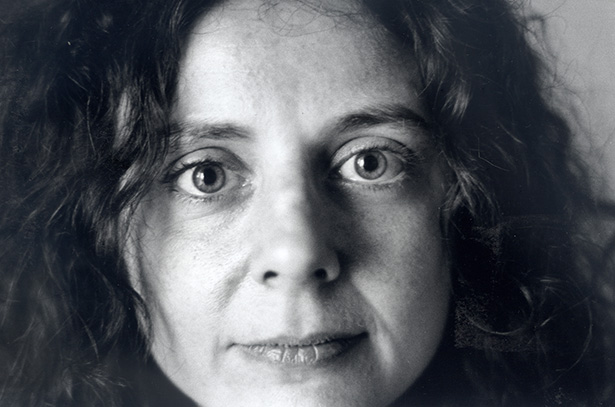
Lee Lozano
Lee Lozano’s paintings are admired for their energy, daring physicality and tirelessness in investigating the body and issues of gender. Although lauded by Lucy Lippard in 1995 as the foremost female conceptual artist of her time, Lozano had disengaged herself from the New York art world completely by the early 1970s. She left behind a body of work of striking formal breadth and complexity. Lozano fought to consolidate her artistic self in a realm void of systems, rules, and group consciousness. She pursued a wholly independent solo studio practice, which culminated in her rejection of the New York art world and a boycott of women. She first refused to attend public art world functions and withdrew from exhibitions, finally relocating to Dallas, Texas. ‘By refusing to speak to women,’ says curator Helen Molesworth, ‘she exposed the systematic and ruthless division of the world into categories of men and women. By refusing to speak to women as an artwork, she also refused the demand of capitalism for the constant production of private property… The strategy of rejection is a powerful one.’
Current Exhibitions
1 / 12

